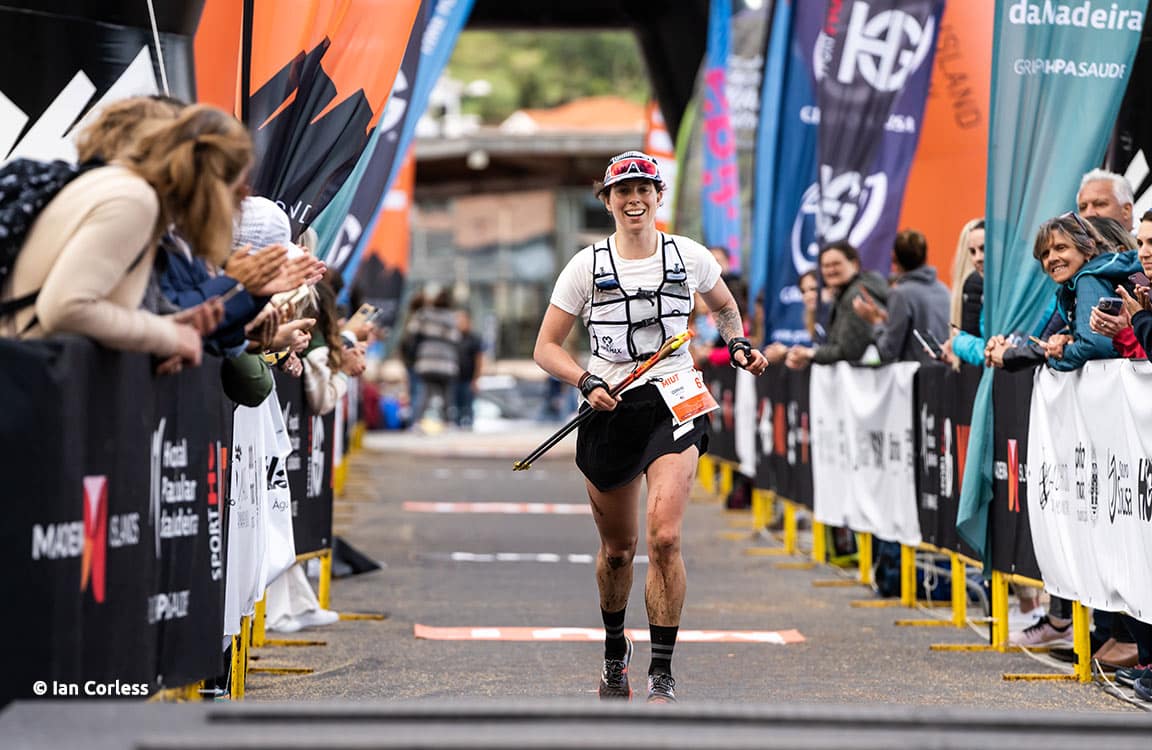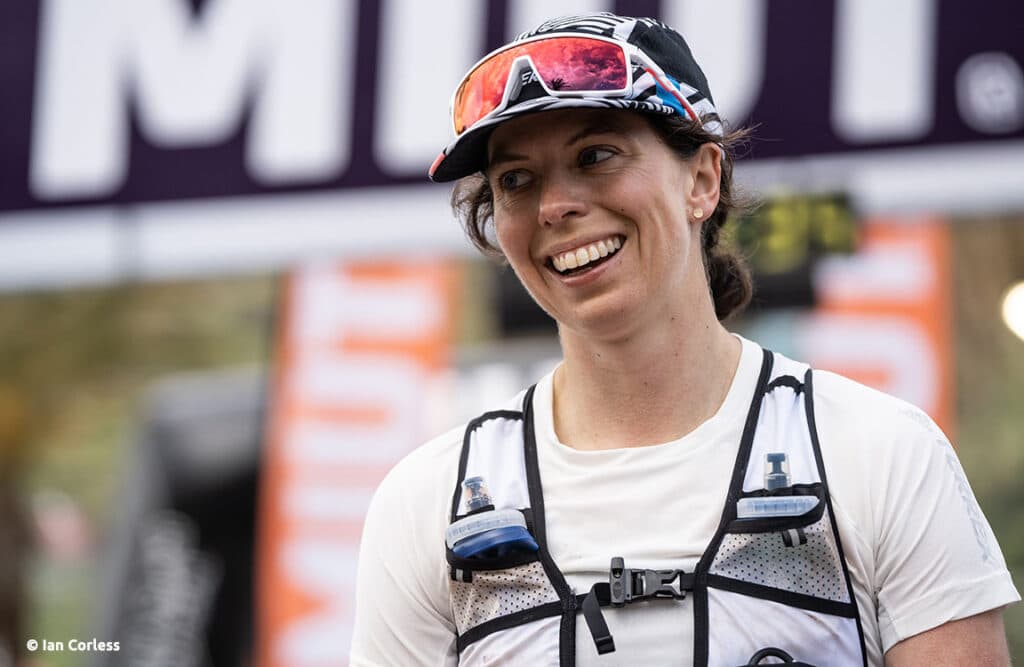
Ultrarunning Injury Recovery Lessons from a Year-Long Comeback
By Corrine Malcolm,
CTS Expert Coach, Ultrarunning Host for the Trainright Podcast
I broke my pelvis 15 months ago but only found out about it a month later. Twelve months ago I was told the healing process was taking longer than expected. Eight months ago I was managing 3- to 4-mile runs but couldn’t run three days in a row without being woken up by bone pain. When I say getting to the start line of the rugged 115km Madeira Island Ultra Trail was the goal and getting to the finish line felt like a win, I’m not speaking in cliches. I am being 100 percent sincere.
There were so many moments filled with doubt over the past year. There were so many instances where I questioned if I would ever run an ultra again. And if I did, would I like it? By the time I got to the midnight start line I didn’t feel like a veteran competitor. I felt like I was running an ultra for the very first time.
Many runners are sidelined by injuries at some point. Some recuperate quickly and others endure long recoveries. A year-long recovery is humbling, frustrating, rewarding, and quite an education. So, what did I learn from my experience that might help you?
Clear the Calendar
My return to running – and now to racing – has been incredibly nonlinear. This was not unusual nor unexpected. However, despite knowing that going in, it was still a tough rollercoaster to ride.
When I got the first MRI report in March of 2021 I thought, “Okay, we’ll clear the calendar, but running UTMB is still reasonable right?” Two months later, UTMB came off the calendar. It was swapped out for a “lower key race” with a few more weeks of buffer. Three months later I emailed the race director to inform them I still wasn’t healthy enough to race.
Although it took me some time to clear the calendar, finally doing it removed a pressure I didn’t realize I had been applying. No longer having TrainingPeaks tell me I was X weeks away from an event slowed down time. The event countdown clock stopped ticking.
Take it One Day at a Time
Subtle changes made big differences. Clearing the calendar instantaneously removed the doubt I had been struggling with. I was no longer stuck constantly comparing myself to where I thought I should be. You’ve heard the race recommendation, “You have to run the mile you’re in.” When it comes returning from injury, the same advice holds true.
I have a friend who jokingly calls me “cloudy with a chance of rain” because I can get trapped waiting for the other shoe to drop. While I generally thrive on long term goals and having something on the calendar to look forward to, the last year taught me the value of taking it one day and one run at a time.
Rebuild Trust in Your Body
The scariest thing about going to the start line in Madeira was the uncertainty my body could do what I was going to ask of it. I wasn’t scared my stomach would go south or that my quads would revolt – I could all but guarantee those things would happen to some degree. Rather, I was terrified I’d break again.
► Free Ultrarunning Training Assessment Quiz
Take our free 2-minute quiz to discover how effective your training is and get recommendations for how you can improve.
The psychological component of injury is daunting. I considered myself highly durable, and when I broke my pelvis all of that went out the window. As we set out into the night from Porto Moniz I remembered my first 100-mile race at Leadville in 2017. I spent the last 40 miles telling my crew I didn’t care if 40 women passed me, I just wanted my legs to keep working – without any certainty they would. We gain confidence and self-efficacy through experience (read more about preventing DNFs). In the face of uncertainty, you must look to the past to remind yourself what you HAVE done and what you CAN do.
Have a Beginner’s Mindset
I’m a competitive person. Just ask my two brothers who I’ve forced into competitions since we’ve all been walking. Getting back to this start line required putting my ego aside and being thoughtful about my expectations. I decided to be open to and eager for the experience without preconceptions. This not only made the event less daunting, but it gave me the flexibility to tackle the ups and downs of racing again.
Enjoying This Article? Get More Free Running Training Tips
Get our coaches' best training advice, delivered straight to your inbox weekly.
I focused on what I could control, adapted, and solved problems along the way. When I had a moment to engage in some competitive aspects of the race in the final 30km, I leaned into it. For the first time, I was at ease with the uncertainty. When I finally saw my teammates waiting for me on the final corner before the finish line, I was overwhelmed with emotions. I had made it. I was going to make it.
Celebrate the Wins
When I said crossing that finish line felt like a win, I meant it. It was a victory over months of doubt. The finish was a win, in that it affirmed my love for this beautiful and brutal sport. It was a victory for taking a chance. And it was a win to trust my body again. The race wasn’t perfect – they rarely are – but now I can’t wait until I get to toe a start line again.


Comments 4
Congrats, Corrine! So happy for you!
Pingback: Ultramarathon and Trail Running Daily News | Mon, May 16 - Ultrarunnerpodcast.com
Way to go! A coach and hero all in one!
Thanks for all you do to keep me in the game!
Thanks Warren, but you know you’re the real inspiration!